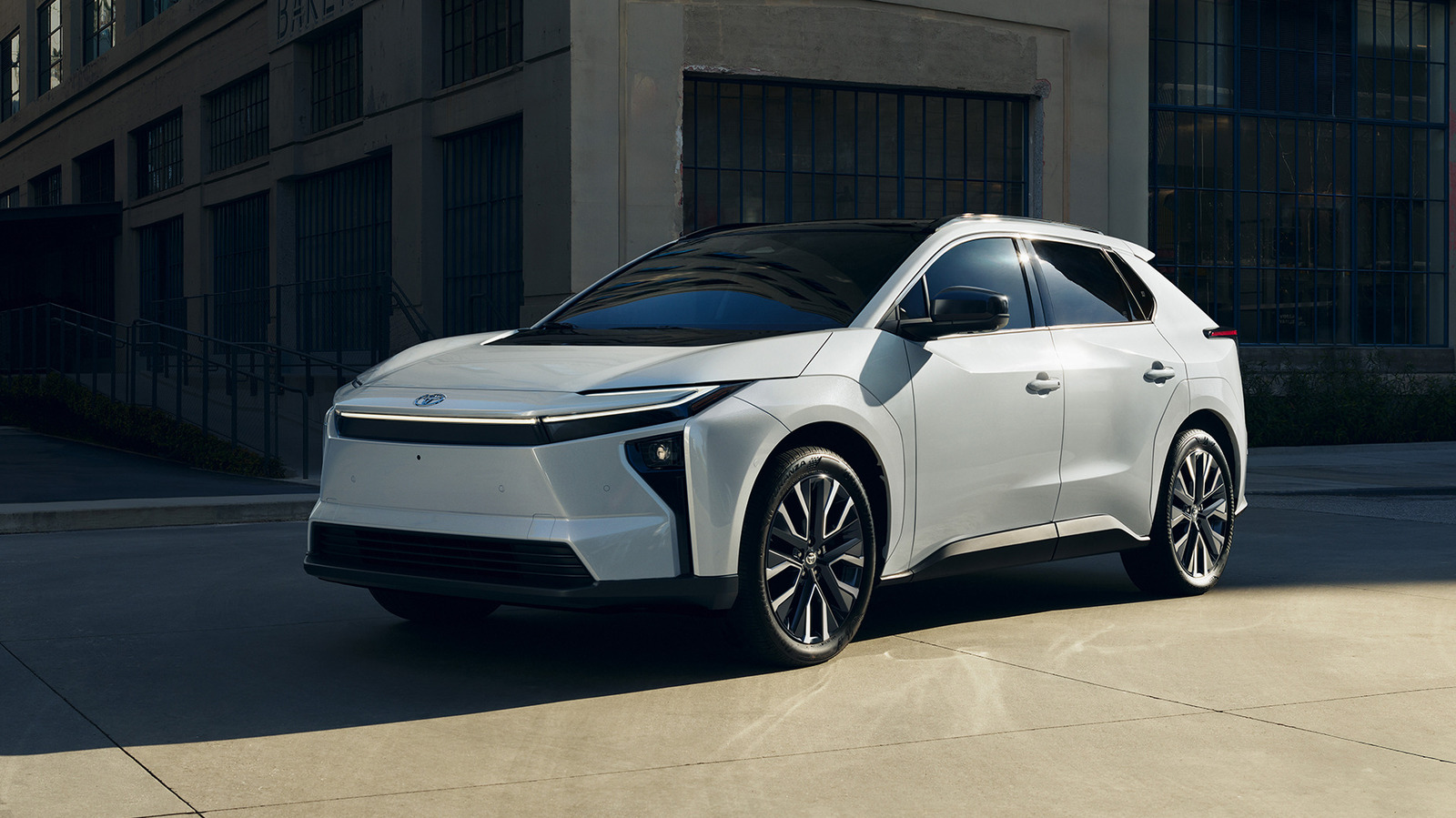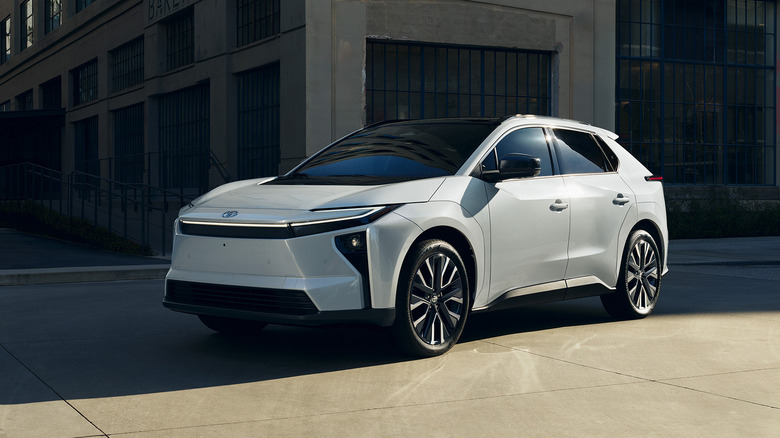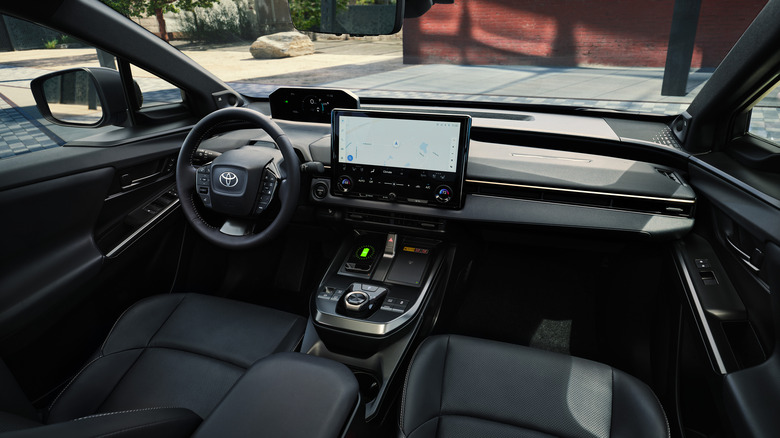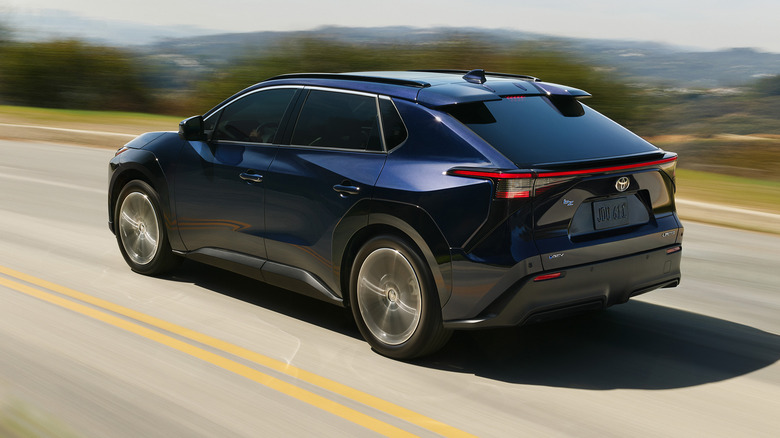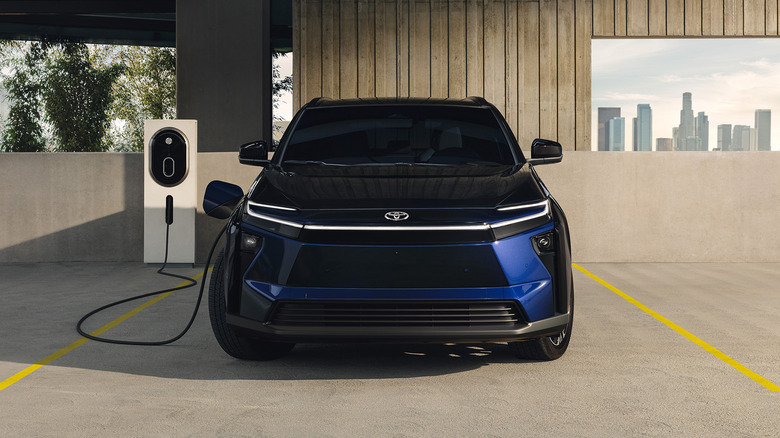Last month we saw the 2026 Subaru Solterra get unveiled with much-improved powertrains, styling and technology, and now Toyota is following suit with its version. We saw the Euro-spec bZ4X facelift back in March, and all of the U.S. model’s updates align, but there is one big bit of news — Toyota is simplifying the EV’s name in the U.S., now just calling it the bZ for 2026. It’s a bit of a strange move, as bZ is already a sub-brand in other markets with models like bZ3, bZ3X and bZ7 on sale with a shared design language. Does that mean the U.S. will get no other electric bZ models or will they just have different names? I guess we’ll have to wait and see.
Name aside, the 2026 bZ does look like a big improvement over the outgoing bZ4X. Its styling is nicer, its range is longer, it has a lot more power, its tech better, and it has the NACS charging port now. It still might not be the most competitive vehicle in its class, but the new bZ will at least be a lot more appealing to a lot more buyers.
Refreshed cabin
As with the Solterra, some trims of the bZ will have body-color exterior panels instead of the large black plastic fenders of the old bZ4X, which makes the car look a lot more upscale. Its slim C-shaped lights and different front bumper better align with other new Toyotas like the Crown Signia, and there are small tweaks to the rear end.
The bZ also shares its redesigned interior with the Solterra. It has a more horizontal design and a redesigned center console that look a lot nicer, and materials have been improved. The central touchscreen is now 14 inches as standard and is running an updated infotainment system, with a volume knob and mix of physical and digital controls for climate functions. The bZ4X’s strangely shaped steering wheel and gauge cluster positioned far back on the dash remain, but the cluster no longer has a surround. The bZ also gets a pair of wireless chargers, four USB-C ports, and 64-color ambient lighting.
Lots more range
The entry-level bZ XLE trim, which has a single motor at the front axle, will be available with a new 57.7-kWh battery pack that gives a Toyota-estimated range of 236 miles. Every other trim has a 74.7-kWh pack, slightly larger than what you could get on the old bZ4X (71.4 kWh for front-wheel drive and 72.8 kWh for all-wheel drive). The Limited AWD and XLE AWD models will do 278 and 288 miles, respectively, up from 222 and 228 miles last year. Front-wheel-drive cars have even better range figures, with the top model finally passing 300 miles of range. The Limited FWD will go 299 miles while the XLE FWD Plus trim will go 314 miles, according to Toyota (versus 236 or 252 miles for FWD bZ4Xs last year).
Toyota added a new battery pre-conditioning system that will get it to optimal DC fast charging temperatures quickly, and it can either be activated manually or automatically. Other new thermal management equipment includes a water-to-water exchanger, a heating adjustment valve and a heat pump. The bZ now uses the Tesla-style NACS charge port, with an 11-kW on-board AC charger instead of the old 7-kW unit. Toyota isn’t yet saying what the bZ’s charge speeds will be, but it’ll probably match the 150-kW max of the Solterra. The company does say it’ll be able to go from 10% to 80% in 30 minutes, and it’ll have Plug & Charge capability.
More power, too
The outgoing bZ4X made just 201 horsepower in front-wheel-drive guise and 214 hp with all-wheel drive, but every new bZ has more power than either. The FWD model now has 221 hp, but AWD cars get 338 hp, the same as the new Solterra XT. Toyota says it’ll be able to do 0 to 60 mph in 4.9 seconds. Also new for the 2026 bZ are paddle shifters on the steering wheel that adjust the regenerative braking force, and AWD models will get an X-Mode that optimizes the powertrain for off-road conditions.
Every 2026 bZ will have 18-inch wheels, a heated steering wheel, heated power front seats, LED projector headlights, a power tailgate, and Toyota’s Safety Sense 3.0 suite of driver-assist features. The Limited adds 20-inch wheels, ventilated front seats, and other safety features like lane-change assist. Wireless Apple CarPlay and Android Auto is standard, too. Pricing hasn’t been announced, but the 2026 bZ will reach Toyota dealers in the second half of this year.


